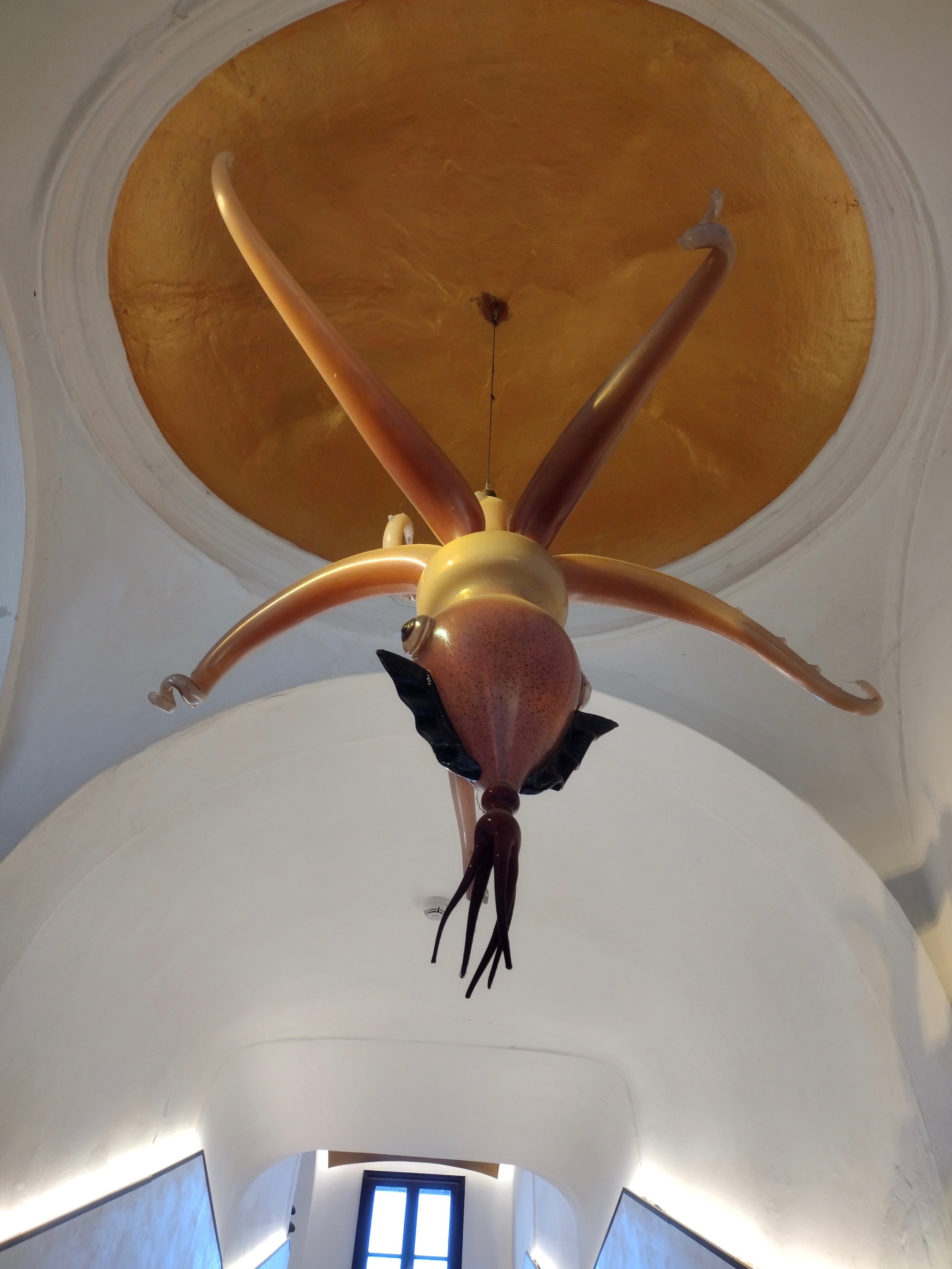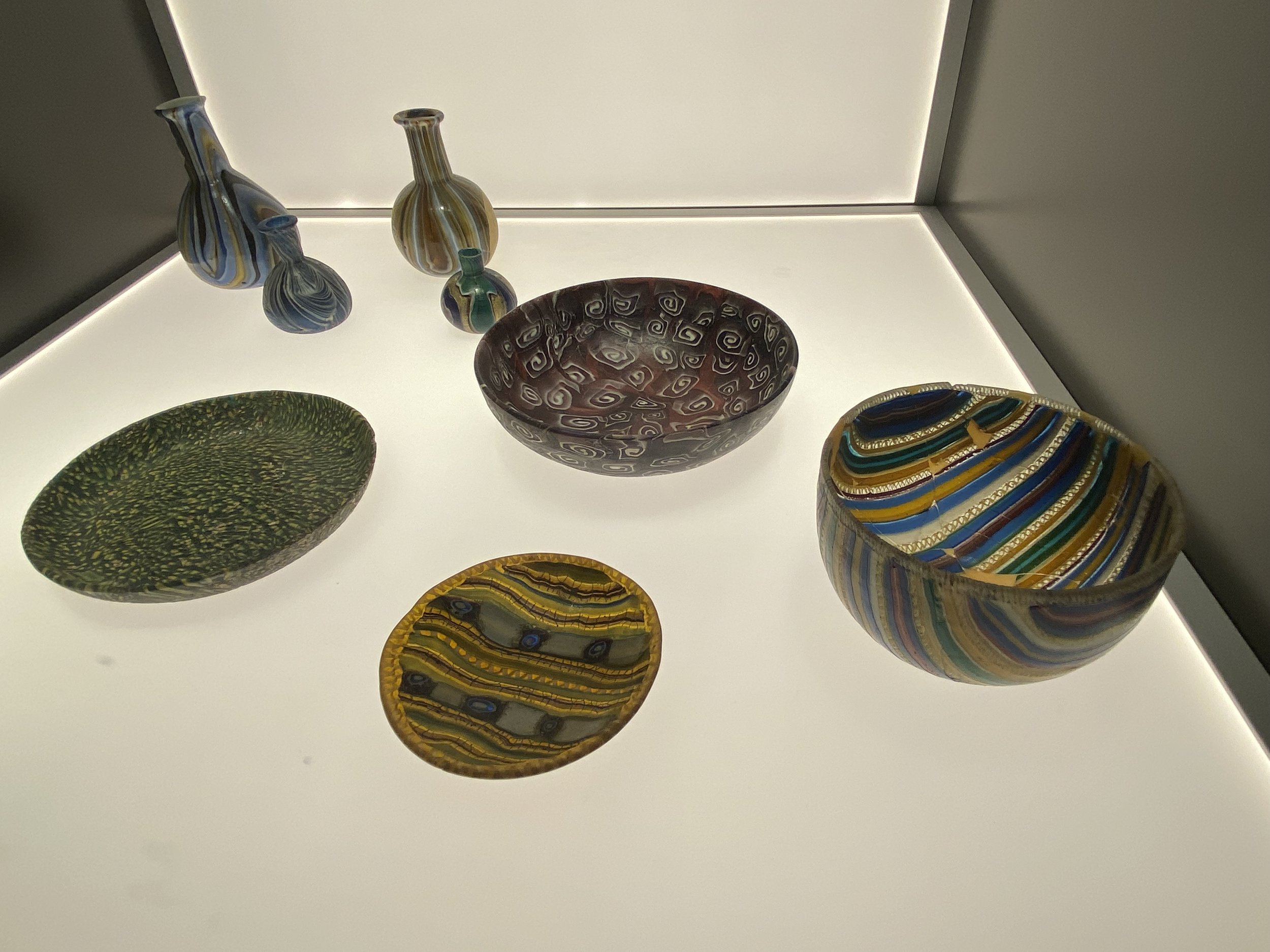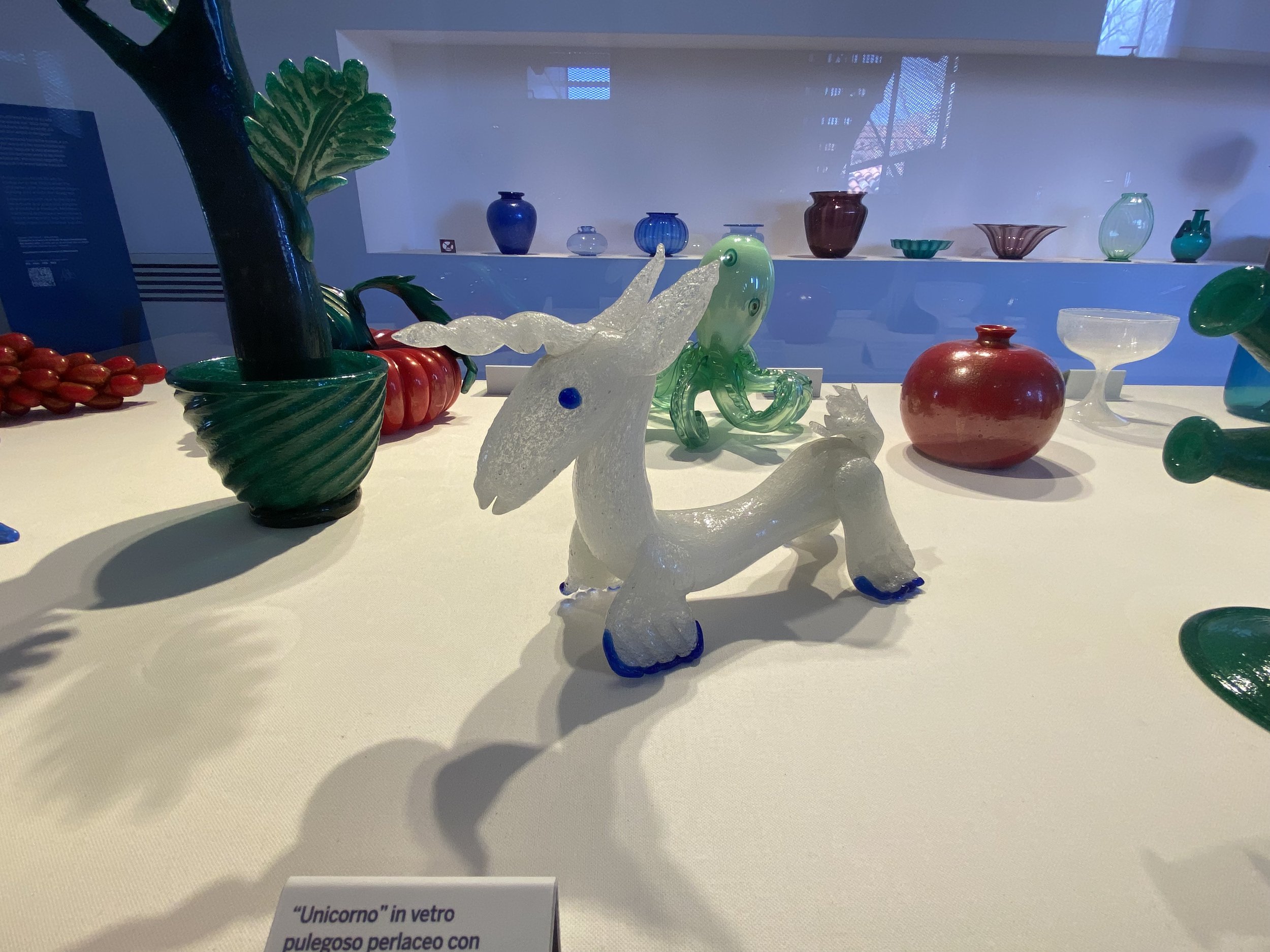Italy & Greece Tour Part V: Glass Museum
My Journey: Museo del Vetro
4/1/2023 Murano
Visiting The Glass Museum was one of the things on my must do list for Murano. I had to focus on what I wanted to take away from the museum. So, I was going to prioritize ancient glass, beads, and murrini.
Glass Sculpture of a squid hanging from stairs to the upper gallery.
This is another well put together museum and I was very excited to get to see it. We broke up into two groups to explore the museum. This is a tactic that we used in several museums previously where I went off on my own while Dez and his family went through together. The museum begins with a quick introduction to how glass is made and worked.
My priority was to find the pre-modern glass collection which turned out to be in a room of its own. Well displayed, but without detailed descriptions. The upper shelf in the room displayed large Roman glass vessels.
The lower shelf displayed collections of Roman glass organized into small groups of similar pieces.
Ribbed Bowl
Taking pictures through glass is always a struggle. I think my picture of this olive green bowl came out nicely, though. I really wish there were labels for these objects.
I am absolutely in love with all the mosaic bowls, plates, and vessels. Just more encouragement to keep working toward being able to do this.
Mosaic objects in the Ancient collection
A significant portion of the museum is dedicated to modern and post-modern glass which correlates to the rise of Murano and Venetian glass.
That is not to say that there were not huge portions of the museum that were of interest to me because of there connection with my research. There was an entire room dedicated to mosaic glass, millefiori, and of course, murrini.
Mosaic Glass is glass that is made of different colored glass that results in a pattern. Mosaic cane has the mosaic pattern in the cross section of the cane. When that pattern is floral in nature, it is millefiori, and if it is made in Murano it is murrini.
One of the take aways from my visit to Murano is not just how long many of the techniques have been around, but styles as well, like this modern Mosaic plate from the 1800’s CE.
Vincenzo Moretti 1880-1883
Whether ancient or modern, I am increasingly falling in love with mosaic glass ware. The museum had a wonderful collection to enjoy.
While white and milk glass is not my favorite color for glass vessels, this room also had a wonderful collection of opalescent glass.
Just as they had done with mosaics, millefiori, and murrini, there was a room dedicated to beads. The room opens with a display walking you through the process of making a flameworked/lampworked bead, with the example being a mosaic bead.
Reconstructed Traditional Bench
The method depicted here for attaching mosaic chips to the bead is basically the same way I usually accomplish this in my own studio. However, the display uses a more archaic source of heating and annealing the glass.
The rest of the room is filled with case after case of beads; some displayed as strands and others individually.
There is also a display of hollow cane that is used to make drawn and cut beads.
Hollow Cane
The cross section of some of this cane is paired in with drawn and cut beads that they are used to make.
There was one room with a collection of mirrors and this table displaying a miniature glass Italian garden.
1760’s reproduction of Italian Garden in Glass
There was a lot of modern and post-modern objects to enjoy. I wish I had time to take it all in. There were a few things that caught my partner and I’s eye.
Modern Glass
One of the items that my partner liked was this nautical themed glass work featuring lit glass jelly fish sculptures.
Ana Maria Regue, Madusa 36 and 32, 2021.
Some other items that caught our eyes are collected below. I particularly liked the vessel with blue and white reticulation, and of course the octopus was cute. You know my gay heart had to highlight the glass unicorn and cock.
Simon Berger’s Shattering Beauty was the temporary exhibit on display at the Museum. Simon is a Swiss artist. Many of the pieces played with mirror and precisely shattered glass.
I have to say that this this was my favorite part of the Shattering Beauty exhibit.
We went through the museum very quickly. The struggle in Venice was to get everything done which meant hitting all the glass sights while also finding time to go to Burano and to have a gondala ride. With the museum done, I quickly looked through the museum shop for research material. I did find two books to pick up.
Tips and Things Learned:
Time, you need time.
Don’t forget to get pics of museum labels.
Back Home
I was inspired to try the mosaic tableware again. I have started on the second attempt and have the blank ready to slump. I was also inspired to try and make some small blown glass vessels.






































































